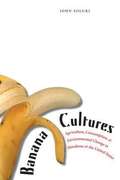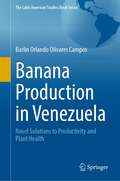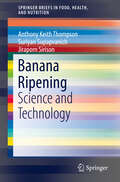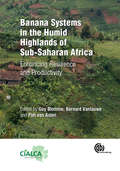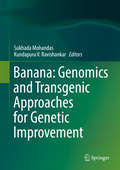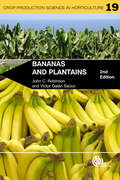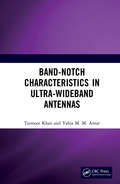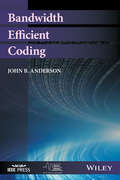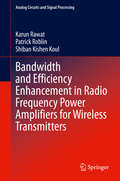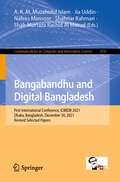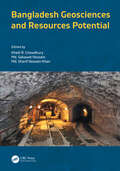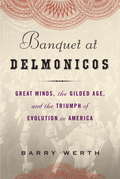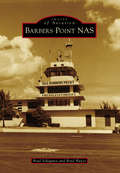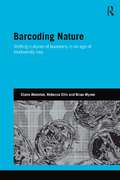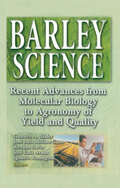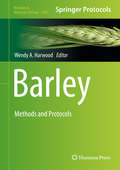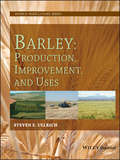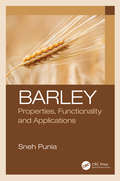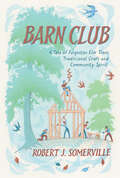- Table View
- List View
Banana Cultures
by John SoluriBananas, the most frequently consumed fresh fruit in the United States, have been linked to Miss Chiquita and Carmen Miranda, "banana republics," and Banana Republic clothing stores-everything from exotic kitsch, to Third World dictatorships, to middle-class fashion. But how did the rise in banana consumption in the United States affect the banana-growing regions of Central America? In this lively, interdisciplinary study, John Soluri integrates agroecology, anthropology, political economy, and history to trace the symbiotic growth of the export banana industry in Honduras and the consumer mass market in the United States. Beginning in the 1870s when bananas first appeared in the U. S. marketplace, Soluri examines the tensions between the small-scale growers, who dominated the trade in the early years, and the shippers. He then shows how rising demand led to changes in production that resulted in the formation of major agribusinesses, spawned international migrations, and transformed great swaths of the Honduran environment into monocultures susceptible to plant disease epidemics that in turn changed Central American livelihoods. Soluri also looks at labor practices and workers' lives, changing gender roles on the banana plantations, the effects of pesticides on the Honduran environment and people, and the mass marketing of bananas to consumers in the United States. His multifaceted account of a century of banana production and consumption adds an important chapter to the history of Honduras, as well as to the larger history of globalization and its effects on rural peoples, local economies, and biodiversity.
Banana Production in Venezuela: Novel Solutions to Productivity and Plant Health (The Latin American Studies Book Series)
by Barlin Orlando Olivares CamposThis book presents an important contribution to the knowledge of the banana soils of Venezuela. Banana, the edible fruit of Musaceae, is a staple food for more than 400 million people worldwide due to their nutritional and energy attributes. This makes Musaceae a crop of worldwide relevance, particularly in tropical regions, highlighting the impact of improved Musaceae cropping systems in the current efforts worldwide oriented towards a new agricultural revolution based on sustainable intensification. To achieve this, better practices for food production based on scientific and technical research capable to consider the complexity and variability within the agri-food sector are necessary. The research presented in this book is oriented towards providing answers to the causes of two aspects considered of high relevance for banana production, both affecting productivity and sustainability, always addressed for the Venezuelan conditions, one of the world’s largest producing countries: 1- The impact of phytosanitary risks related to Fusarium Wilt (FW) and the influence of the soil on the incidence of Banana Wilt (BW); and 2- An observed trend towards loss of productivity and decline of soil quality in some commercial farms of Aragua and Trujillo states in Venezuela. The book presents a pioneering study in the application of categorical regression (CATREG) in the characterization of banana soils and analyses soil morphological variables, such as texture, dry consistency, biological activity, reaction to HCl, and type of structure to characterize soil productivity for growing healthy bananas. It develops, for the first time in Venezuela, risk analysis and climatic suitability maps for lethal wilt disease in bananas caused by Fusarium oxysporum f. sp. cubense (Foc) Tropical Race 4 (TR4) (syn. Fusarium odoratissimum). Innovative machine learning techniques are used to predict BW so that future crop development can be done more efficiently and sustainably.
Banana Ripening: Science and Technology (SpringerBriefs in Food, Health, and Nutrition)
by Anthony Keith Thompson Suriyan Supapvanich Jiraporn SirisonThe technology used to ripen bananas is affected by a wide range of factors, including the cultivar, growing conditions, harvesting method, and maturity at which the fruit are harvested and handled. Various post harvest treatments applied to fruit can also impact ripening. While many textbooks have been dedicated to Musa (bananas and plantains), none have focused exclusively on the ripening process. The commercial ripening of bananas and the chemical changes that occur thereby are considered here in detail. In developed, temperate countries where bananas are imported, successful ripening technologies have evolved. Most bananas, however, are marketed locally in the country where they are grown, and often the ripening technologies used have economic and health implications. This brief offers an in-depth discussion of not only the implications of these technologies, but also of alternative ripening methods and their commercial applications. For an understanding of both the chemical basis by which bananas ripen and the technologies used to control the process, look no further than this essential text.
Banana Systems in the Humid Highlands of Sub-Saharan Africa
by Michael Bolton David Turner Guy Blomme Anne Rietveld Nicolas Roux Deo Kantungeko Laurence Jassogne Idd Ramathani William Tinzaara Emily Ouma Svetlana Gaidashova Fenton Beed Muller Kamira Alex Barekye Francois Iradukunda Valentine Nakato Emmanuel Njukwe Piet Van Asten Charles Sivirihauma Faustin Ngama Boloy Edouard Rurangwa Walter Ocimati Bernard Vanlauwe Sam Mpiira Idja Sikyolo Joseph Adheka Alex Rutikanga'Banana Systems in the Humid Highlands of Sub-Saharan Africa: Enhancing Resilience and Productivity' addresses issues related to agricultural intensification in the (sub)humid highland areas of Africa, based on research carried out in the Great Lakes Region by the Consortium for Improving Agriculture-based Livelihoods in Central Africa.
Banana Systems in the Humid Highlands of Sub-Saharan Africa: Enhancing Resilience and Productivity
by Michael Bolton David Turner Anne Rietveld Nicolas Roux Deo Kantungeko Laurence Jassogne Idd Ramathani William Tinzaara Emily Ouma Svetlana Gaidashova Fenton Beed Muller Kamira Alex Barekye Francois Iradukunda Valentine Nakato Emmanuel Njukwe Charles Sivirihauma Faustin Ngama Boloy Edouard Rurangwa Walter Ocimati Sam Mpiira Idja Sikyolo Joseph Adheka Alex Rutikanga‘Banana Systems in the Humid Highlands of Sub-Saharan Africa: Enhancing Resilience and Productivity’ addresses issues related to agricultural intensification in the (sub)humid highland areas of Africa, based on research carried out in the Great Lakes Region by the Consortium for Improving Agriculture-based Livelihoods in Central Africa.
Banana: Genomics and Transgenic Approaches for Genetic Improvement
by Sukhada Mohandas Kundapura V. RavishankarBananas and plantains are among the most important food and cash crops in the world. They are cultivated in more than 135 countries, across the tropics and subtropics, with an annual global production of ca. 130 million metric tonnes. Though bananas are one of the most important components of food security in many developing countries, banana production is threatened by both abiotic and biotic stresses. These include a wide range of diseases and pests, such as bunchy top virus, burrowing nematodes, black Sigatoka or black leaf streak, Fusarium wilt, etc. In recent years, considerable progress has been made and several biotechnological and genomic tools have been employed to help understand and unravel the mysterious banana genome. Molecular and genomic studies have helped to decipher the Musa genome and its evolution. Genetic linkage map and whole genome sequencing of both Musa acuminata and Musa balbisiana (progenitors of cultivated banana) have completely changed the way of thinking and the approach on banana crop improvement. Whole-genome sequencing has helped to improve the selection of quantitative traits such as yield, as well as the selection of optimal parents for developing required hybrids in breeding programs. Gene isolation and the analysis of mutants have helped in the characterization of genes of agronomic value and the associated regulatory sequences. With the advent of molecular markers and new statistical tools, it is now possible to measure the diversity, identify genes and useful alleles linked to important agronomic traits. Further these alleles can be incorporated into cultivars through marker assisted selection or through transgenic approach. Transgenic approaches are potential tools for direct transfer of these genes into popular cultivars, which are generally not amenable for conventional breeding techniques, in specific with crops such as bananas which are sterile, triploid and heterozygous thereby making it difficult to reconstruct the recurrent genotypes in banana. Transgenic techniques thus have helped overcome the difficulty of working with sterile, triploid banana crop. In the last five years, enormous amount of new information and techniques have been generated for banana. A comprehensive book entitled "Banana: Genomics and Transgenic Approaches for Genetic improvement" on banana genomics, latest transgenic technologies and tools available for improved crop development in banana will address all these requirements.
Bananas and Plantains
by John Robinson Víctor Galán SaúcoBananas and plantains are major fruit crops in the tropics and subtropics, making a vital contribution to the economies of many countries. In the last 15 years, substantial changes have occurred in banana production, among them the increased importance of fungal and viral diseases and their serious impact on Cavendish export cultivars, smallholder plantains and cooking bananas. Changes in production systems such as protected greenhouse cultivation, organic, fair-trade and integrated cultivation and their respective certification schemes have also become prominent. This book provides an accessible review of the scientific principles of banana production and how these relate to field practices. Revised and updated with expanded coverage of world trade statistics and policies, breeding of new cultivars in relation to disease resistance and markets, prospects for genetically-modified bananas and the increasing role of endophytes in controlling pests and diseases, this new edition is an essential resource for researchers and students in horticulture.
Bananas and Plantains (2nd edition)
by John C. Robinson Victor Galan SaucoThis book provides an accessible review of the scientific principles of banana production and relates these to field practices. This revised and updated edition includes expanded coverage of world trade, organic and integrated cultivation, and cultivation in greenhouses.
Band Structure of Cubic Hydrides
by Dimitrios A. PapaconstantopoulosThis book compiles detailed results of electronic structure calculations for most possible cubic monohydrides, dihydrides and selected trihydrides related to superconductivity, comprising elements with atomic numbers up to 103. Beginning with an introduction to the theory and details of the computational methods implemented, this handbook presents a collection of chapters containing results for different classes of cubic hydrides, featuring tables of three-centre and two-centre tight-binding parameterizations, diagrams of energy bands, and densities of states with angular momentum decomposition. Equilibrium lattice parameters and bulk moduli are also included, along with the electron-ion matrix element (Hopfield-McMillan parameter), Stoner criterion for ferromagnetism and values of Fermi velocities and plasmon energies. Each chapter features a brief text explaining the results presented with comparison to experimental values when available. A selection of the implemented computer codes is reproduced for the reader’s own use. This handbook is an ideal complement to any standard electronic structure text for students and researchers in materials science, condensed matter physics, and quantum chemistry.
Band-Notch Characteristics in Ultra-Wideband Antennas
by Yahia M.M. Antar Taimoor KhanThis book comprehensively reviews ultra-wideband and ultra-wideband MIMO antennas with band notched characteristics with a focus on interference cancellation. The book has been organized into seven chapters that covers Single-band, Dual-band and multi-band notched Ultra-wideband Antennas followed by Band-Notched Characteristics in Ultra-Wideband MIMO Antennas. Further, it explains reconfigurable-band notched and tunable-band Notched Ultra-wideband Antennas including advanced applications of Ultrawideband Systems. Overall, it covers different techniques of cancelling the electromagnetic interference in ultra-wideband (UWB) in a concise volume. This book: Provides a comprehensive presentation of avoiding interference in Ultra-Wideband (UWB) systems. Reviews state of the art in UWB antennas, filtennas and various tunable technologies. Explains different techniques for producing band-notch characteristics in UWB systems. Includes discussion on historical perspectives of UWB Technology. Consolidates different research activities carried out on the electromagnetic interference cancellation techniques in the UWB communication systems. Band-Notch Characteristics in Ultra-Wideband Antennas is aimed at researchers and graduate students in Electrical and Antenna Engineering.
Bandwidth Allocation for Video under Quality of Service Constraints
by Harry G. Perros Bushra AnjumWe present queueing-based algorithms to calculate the bandwidth required for a video stream so that the three main Quality of Service constraints, i.e., end-to-end delay, jitter and packet loss, are ensured.Conversational and streaming video-based applications are becoming a major part of the everyday Internet usage. The quality of these applications (QoS), as experienced by the user, depends on three main metrics of the underlying network, namely, end-to-end delay, jitter and packet loss. These metrics are, in turn, directly related to the capacity of the links that the video traffic traverses from its source to destination. The main problem that this book addresses is how much bandwidth we should allocate on the path from source to destination of a video traffic flow such that the end-to-end delay, jitter and packet loss of the video packets are within some expected required bounds.
Bandwidth Efficient Coding
by John B. AndersonThis book addresses coding, a new solution to the major challenge of communicating more bits of information in the same radio spectrum. Explores concepts and new transmission methods that have arisen in the last 15 years. Discusses the method of faster than Nyquist signaling. Provides self-education resources by including design parameters and short MATLAB routines. Bandwidth Efficient Coding takes a fresh look at classical information theory and introduces a different point of view for research and development engineers and graduate students in communication engineering and wireless communication.
Bandwidth and Efficiency Enhancement in Radio Frequency Power Amplifiers for Wireless Transmitters (Analog Circuits and Signal Processing)
by Karun Rawat Shiban Kishen Koul Patrick RoblinThis book focuses on broadband power amplifier design for wireless communication. Nonlinear model embedding is described as a powerful tool for designing broadband continuous Class-J and continuous class F power amplifiers. The authors also discuss various techniques for extending bandwidth of load modulation based power amplifiers, such as Doherty power amplifier and Chireix outphasing amplifiers. The book also covers recent trends on digital as well as analog techniques to enhance bandwidth and linearity in wireless transmitters.Presents latest trends in designing broadband power amplifiers;Covers latest techniques for using nonlinear model embedding in designing power amplifiers based on waveform engineering;Describes the latest techniques for extending bandwidth of load modulation based power amplifiers such as Doherty power amplifier and Chireix outphasing amplifiers;Includes coverage of hybrid analog/digital predistortion as wideband solution for wireless transmitters;Discusses recent trends on on-chip power amplifier design with GaN /GaAs MMICs for high frequency applications.
Bangabandhu and Digital Bangladesh: First International Conference, ICBBDB 2021, Dhaka, Bangladesh, December 30, 2021, Revised Selected Papers (Communications in Computer and Information Science #1550)
by A. K. M. Muzahidul Islam Jia Uddin Nafees Mansoor Shahriar Rahman Shah Murtaza Rashid Al MasudThis book constitutes selected papers presented during the First International Conference on Bangabandhu and Digital Bangladesh, ICBBDB 2021, held in Dhaka, Bangladesh, in December 2021. Due to the COVID-19 pandemic the conference was partly held online. The 16 papers presented were thoroughly reviewed and selected from the 90 submissions. They present research in the areas of artificial intelligence, machine learning, image processing, blockchain technology, human-computer interaction, etc.
Bangladesh Geosciences and Resources Potential
by Khalil R. ChowdhuryThis book focuses on the potential natural resources of Bangladesh from Precambrian to recent times and their detailed geological background. Natural resources and their management are important for the sustainable economic development of a country. Focusing on the geological setting of the Bengal Basin, Bangladesh Geosciences and Resources Potential introduces and comprehensively describes the depositional environments, status and prospects of the potential natural resources of Bangladesh. Individual chapters outline the potential resources comprising a wide range of deposit types across the country. A selective overview of these natural resources—metallic minerals, coal, limestone, hydrocarbon, peat, placer deposits, surface, groundwater and so forth—is provided with relevant references. The book gives a synthesis of the issues in the mineral, hydrocarbon and water resource sectors from a resource-economic perspective. FEATURES Provides a geoscientific knowledge of the potential natural resources with relevant maps, figures and tables pertaining to the Bangladesh region Explains the resource-economic context, geomorphology and sustainable land use and the effects of climate change on both surface water and groundwater resources Discusses resource potentials based on systematic geological stages Presents the resources of renewable energy and discusses how to increase their use and effectiveness Reinforces basic geological processes and outcomes with an understanding of resource geology and constraints on natural resource management This book is aimed at researchers, graduate students and professionals in geology, energy and mineral resources, hydrogeology, water resources engineering, the environmental sciences and resource exploration and planning.
Bank Recycling of Petro Dollars to Emerging Market Economies During the Current Oil Price Boom
by Johannes WiegandA report from the International Monetary Fund.
Banquet at Delmonico's
by Barry WerthIn Banquet at Delmonico's, Barry Werth, the acclaimed author of The Scarlet Professor, draws readers inside the circle of philosophers, scientists, politicians, businessmen, clergymen, and scholars who brought Charles Darwin's controversial ideas to America in the crucial years after the Civil War.The United States in the 1870s and '80s was deep in turmoil-a brash young nation torn by a great depression, mired in scandal and corruption, rocked by crises in government, violently conflicted over science and race, and fired up by spiritual and sexual upheavals. Secularism was rising, most notably in academia. Evolution-and its catchphrase, "survival of the fittest"-animated and guided this Gilded Age.Darwin's theory of natural selection was extended to society and morals not by Darwin himself but by the English philosopher Herbert Spencer, father of "the Law of Equal Freedom," which holds that "every man is free to do that which he wills," provided it doesn't infringe on the equal freedom of others. As this justification took root as a social, economic, and ethical doctrine, Spencer won numerous influential American disciples and allies, including industrialist Andrew Carnegie, clergyman Henry Ward Beecher, and political reformer Carl Schurz. Churches, campuses, and newspapers convulsed with debate over the proper role of government in regulating Americans' behavior, this country's place among nations, and, most explosively, the question of God's existence.In late 1882, most of the main figures who brought about and popularized these developments gathered at Delmonico's, New York's most venerable restaurant, in an exclusive farewell dinner to honor Spencer and to toast the social applications of the theory of evolution. It was a historic celebration from which the repercussions still ripple throughout our society.Banquet at Delmonico's is social history at its finest, richest, and most appetizing, a brilliant narrative bristling with personal intrigue, tantalizing insights, and greater truths about American life and culture.From the Hardcover edition.
Barbers Point NAS (Images of Aviation)
by Brad Hayes Brad SekigawaRising from the ashes of the Pearl Harbor attack, Barbers Point Naval Air Station would become a major staging point for US Navy aircraft for the war in the Pacific, culminating with the surrender of the Empire of Japan. With the end of World War II in the Pacific and throughout the Cold War, Barbers Point would be home base for the US Navy's fleet of maritime patrol aircraft that hunted the growing threat of Soviet submarines prowling the vast Pacific. From 1942 until its closing in 1999, Barbers Point was the US Navy's only naval air station in the Pacific.
Barcoding Nature: Shifting Cultures of Taxonomy in an Age of Biodiversity Loss (Genetics and Society)
by Claire Waterton Rebecca Ellis Brian WynneDNA Barcoding has been promoted since 2003 as a new, fast, digital genomics-based means of identifying natural species based on the idea that a small standard fragment of any organism’s genome (a so-called ‘micro-genome’) can faithfully identify and help to classify every species on the planet. The fear that species are becoming extinct before they have ever been known fuels barcoders, and the speed, scope, economy and ‘user-friendliness’ claimed for DNA barcoding, as part of the larger ferment around the ‘genomics revolution’, has also encouraged promises that it could inspire humanity to reverse its biodiversity-destructive habits. This book is based on six years of ethnographic research on changing practices in the identification and classification of natural species. Informed both by Science and Technology Studies (STS) and the anthropology of science, the authors analyse DNA barcoding in the context of a sense of crisis – concerning global biodiversity loss, but also the felt inadequacy of taxonomic science to address such loss. The authors chart the specific changes that this innovation is propelling in the collecting, organizing, analyzing, and archiving of biological specimens and biodiversity data. As they do so they highlight the many questions, ambiguities and contradictions that accompany the quest to create a genomics-based environmental technoscience dedicated to biodiversity protection. They ask what it might mean to recognise ambiguity, contradiction, and excess more publicly as a constitutive part of this and other genomic technosciences. Barcoding Nature will be of interest to students and scholars of sociology of science, science and technology studies, politics of the environment, genomics and post-genomics, philosophy and history of biology, and the anthropology of science.
Barefoot Biodynamics: How Cows, Compost, and Community Help Us Understand Rudolf Steiners Agriculture Course
by Jeff PoppenWith decades of knowledge and proven, common-sense methods from &“The Barefoot Farmer,&” this practical guide to biodynamic principles and practices will appeal to growers of every scale and experience level."An excellent read for all who want to understand the keys to growing nutrient-dense food."—Gabe Brown, author of Dirt to Soil; co-founder, Understanding AgIn Barefoot Biodynamics, organic grower Jeff Poppen—&“The Barefoot Farmer&”—combines tales from his personal history in rural Tennessee with the practical applications of biodynamic principles and the deep aspects of the biodynamic methods that continue to make his farm a success today.Jeff&’s friendly, direct, and humorous writing will appeal not only to the biodynamic-curious, but also to farmers and gardeners who have experimented with the biodynamic approach and are looking for a deeper understanding of the practice.Rooted in the teachings of biodynamic pioneer Rudolf Steiner, Jeff&’s unique insights and deep reflections on &“guiding lines&” of biodynamic growing are an invaluable resource. Those &“guiding lines&” include:producing a farm&’s fertility using cover crops, compost, and other on-farm inputsenjoying the renewing power of farm festivalsaugmenting scientific knowledge with the power of observation and intuitionavoiding chemical fertilizersunderstanding that carbon, oxygen, nitrogen, and hydrogen make up 95 percent of the physical structure of plants and are freely available in the air around usenhancing the availability of critical minerals such as silica and lime through good farming practicesbuilding humus-rich soil teeming with microbial lifeusing homeopathic preparations to heal and enrich the soilIn addition, Jeff walks the reader through the eight lectures on farming given by Steiner in 1924, summarizing important points from each lecture and &“translating&” them from Steiner&’s profound yet sometimes impenetrable vocabulary into plain language. In Barefoot Biodynamics, Jeff provides new insight into these enigmatic lectures, revealing an often overlooked yet cost-effective farming method rooted in common sense.
Barley Science: Recent Advances from Molecular Biology to Agronomy of Yield and Quality
by Roxana Savin Gustavo A Slafer Jose Luis Molina-Cano Jose Luis Araus Ignacio RomagosaFind up-to-date information on barley for malting, food, and animal feed!This comprehensive book covers every aspect of barley from molecular biology to agronomy of yield and quality. In addition to the exposition of the basic concepts, Barley Science explains the latest developments in the field. In addition, this remarkable book presents ideas and techniques for bridging the gap between physiology and breeding. Beginning with the history of this ancient cultivated grain, Barley Science presents state-of-the-art information on genetics and breeding, physiology, and agronomy. One chapter explains the CERES computer simulation of barley growth, development, and yield. Every chapter includes a thorough literature review, and you will find many helpful tables and figures.Barley Science offers cutting-edge information on the latest developments in the field, including: wild barley as a source of genes for crop improvement genetics and breeding for specific attributes genetic engineering determining barley yield under stress new breeding strategies for disease resistance choosing genotype, sowing date, and plant density for malting barley enhancing pre-harvest sprouting resistance barley proteins and malting performance Written by the top experts in the field, Barley Science is an excellent update and broadening of the information found in previous barley books. Agronomists, breeders, geneticists, and physiologists--and their students--will turn again and again to this essential resource.
Barley: Methods and Protocols (Methods in Molecular Biology #1900)
by Wendy A. HarwoodThis detailed volume explores barley as both a crop and a model, with practical techniques such as crossing barley, a range of tissue culture methods, the preparation of barley tissues for different forms of microscopy, and the assessment of sensitivity to abiotic stresses. Efficient protocols are provided for transformation, TILLING, virus-induced gene silencing and genome editing. There is also particular emphasis on a range of protocols for genotyping and for the analysis of gene expression. Written for the highly successful Methods in Molecular Biology series, chapters include introductions on their respective topics, lists of the necessary materials and reagents, step-by-step, readily reproducible laboratory protocols, and tips on troubleshooting and avoiding known pitfalls. Authoritative and easy-to-use, Barley: Methods and Protocols serves as a valuable reference volume for cereal researchers and breeders by providing detailed protocols covering important traditional skills such as crossing and tissue culture through to the latest technologies for genotyping, expression analysis, and genome editing.
Barley: Production, Improvement, and Uses (World Agriculture Series #12)
by Steven E. UllrichBarley is one of the world's most important crops with uses ranging from food and feed production, malting and brewing to its use as a model organism in molecular research. The demand and uses of barley continue to grow and there is a need for an up-to-date comprehensive reference that looks at all aspects of the barley crop from taxonomy and morphology through to end use. Barley will fill this increasing void. Barley will stand as a must have reference for anyone researching, growing, or utilizing this important crop.
Barley: Properties, Functionality and Applications
by Sneh PuniaBarley: Properties, Functionality and Applications provides a systematic introduction and a comprehensive examination of barley science. Recent research has raised the importance of barley finding that barley is a rich source of phenolic compounds, dietary fiber, vitamins, and minerals. Studying the properties of barley provides a basis for better utilizing it, in addition to further development of barley as a sustainable crop. This book will explore knowledge about barley production, grain structure, chemistry and nutritional aspects, primary processing technologies, product formulations and the future prospects of barley. The book also discusses how the limitations of using barley in food products may be overcome by processing of barley grains. Thermal and food preparation methods applied to cereals improves their texture, palatability and nutritive value by gelatinization of starch, denaturation of proteins, increased nutrient availability, inactivation of heat labile toxic compounds and other enzyme inhibitors Key Features: Contains information on the physical, functional and antioxidant properties in barley flour Deals with the latest development in physical, chemical and enzymatic modification of native barley starch Explores the utilization of malt and malt products in brewing and additionally in distilling, vinegar production and commercially as a food ingredients Provides information in enhancing shelf life and its utilization in phytochemical rich product development. With comprehensive knowledge on nutritional and non-nutritional aspects of barley, this book provides the latest information for grain science professionals and food technologists alike. It will be a useful supplementary text for classes teaching cereal technology, cereal science, cereal chemistry, food science, food chemistry, and nutritional properties of cereals.
Barn Club: A Tale of Forgotten Elm Trees, Traditional Craft and Community Spirit
by Robert Somerville"In today’s ego-techno-centred world, Robert Somerville’s… ‘Barn Club’ approach is a way forward that utilizes local traditions, local materials and local hands to create a built environment that is more harmonious with the natural world and of course more beautiful."—Jack A. Sobon, architect, timber framer, and author of Hand Hewn Natural history meets traditional hand craft in this celebration of the elm tree and community spirit. Perfect for fans of Norwegian Wood and The Hidden Life of Trees Barn Club calls on us to discover our landscapes more intimately and to explore the joys of making beautiful things by hand, together. When renowned craftsman Robert Somerville moved to Hertfordshire, in southern England, he discovered an unexpected landscape rich with wildlife and elm trees. Nestled within London’s commuter belt, this wooded farmland inspired Somerville, a lifelong woodworker, to revive the ancient tradition of hand-raising barns. Barn Club follows the building of Carley Barn, over the course of one year. Volunteers from all walks of life joined Barn Club, inspired to learn this ancient skill of building elm barns by hand, at its own quiet pace and in the company of others, while using timber from the local woods. The tale of the elm tree in its landscape is central to Barn Club. Its natural history, historic importance, and remarkable survival make for a fascinating story. This is a tale of forgotten trees, a local landscape, and an ancient craft. This book features 16 pages of color photographs, and black and white line drawings of techniques and traditional timber frame barns feature throughout.
